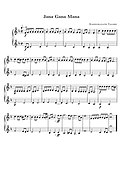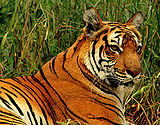For more information join with us ____Kidscbsequestions.blogspot.com _____
Any other information comment below in comment section and let us know.
| Symbol | Name | Image | References |
|---|---|---|---|
| Official name | Republic of India Hindi: भारत गणराज्य ("Bhārat Gaṇarājya") | ||
| National Flag | Tiranga |  | A horizontal rectangular tricolour with equally sized deep saffron at the top, white in the middle and India green at the bottom. In the center is a navy blue wheel with twenty-four spokes, known as the Ashoka Chakra. The flag is based on the Swaraj flag designed by Pingali Venkayya.[1] |
| National emblem & National motto | State Emblem of India ("Lion Capital of Ashoka") Satyameva Jayate Sanskrit: सत्यमेव जयते ("Truth Alone Triumphs") |  | An adaptation of Lion Capital of Ashoka at Sarnath was adopted as the National Emblem of India on 26 January 1950, the day India became a republic. Forming an integral part of the emblem is the motto inscribed below the abacus in Devanagari script: "Satyameva Jayate" (English: Truth Alone Triumphs), a quote taken from Mundaka Upanishad, the concluding part of the sacred Hindu Vedas.[3] |
| National anthem | Jana Gana Mana ("Thou Art the Ruler of the Minds of All People") |  | Jana Gana Mana is the national anthem of India. It was originally composed as Bharoto Bhagyo Bidhata in Bengali by polymath Rabindranath Tagore. The first stanza of the song Bharoto Bhagyo Bidhata was adopted by the Constituent Assembly of India as the National Anthem on 24 January 1950. |
| National song | Vande Mataram ("I bow to thee, O Mother!") |  | Vande Mataram is a Sanskrit poem written by Bankim Chandra Chatterjee which he included in his 1882 Bengali novel Anandamath. The poem was first sung by Rabindranath Tagore at the 1896 session of the Indian National Congress. The first two verses of the song were adopted as the National Song of India On 24 January 1950 by the Constituent Assembly of India. |
| National days | Independence Day, Republic Day, Gandhi Jayanti |  | 26 January Republic Day, adoption of the Constitution of India in 1950 15 August Independence from the British Empire in 1947 2 October Gandhi Jayanti, birth anniversary of Father of the Nation |
| Oath of Allegiance | National Pledge |  | It was written in Telugu by Pydimarri Venkata Subba Rao in 1962. Central Advisory Board on Education directed that the pledge to be sung in Schools and that this practice to be introduced by 26 January 1965.[4] It is commonly recited by Indians in unison at public events, especially in schools, and during the Independence Day and Republic Day celebrations. |
| National currency | Indian rupee ("₹, INR") |  | Indian rupee (ISO code: INR) is the official currency of the Republic of India. The issuance of the currency is controlled by the Reserve Bank of India. The Indian rupee symbol is derived from the Devanagari consonant "र" (ra) and the Latin letter "R" was adopted in 2010. According to Udaya Kumar, its designer, the design is based on the Indian tricolour. |
| National calendar | Indian national calendar |  | The Indian national calendar, sometimes called the Shalivahana Shaka calendar. It is used, alongside the Gregorian calendar, by The Gazette of India, in news broadcasts by All India Radio and in calendars and communications issued by the Government of India. |
| National cockade | Indian cockade |  | A cockade is a knot of ribbons, or other circular- or oval-shaped symbol of distinctive colours which is usually worn on a hat. |
| National animal | Bengal tiger |  | The Bengal tiger is a tiger from a specific population of the Panthera tigris tigris subspecies that is native to the Indian subcontinent. |
| National heritage animal | Indian elephant |  |



No comments:
Post a Comment